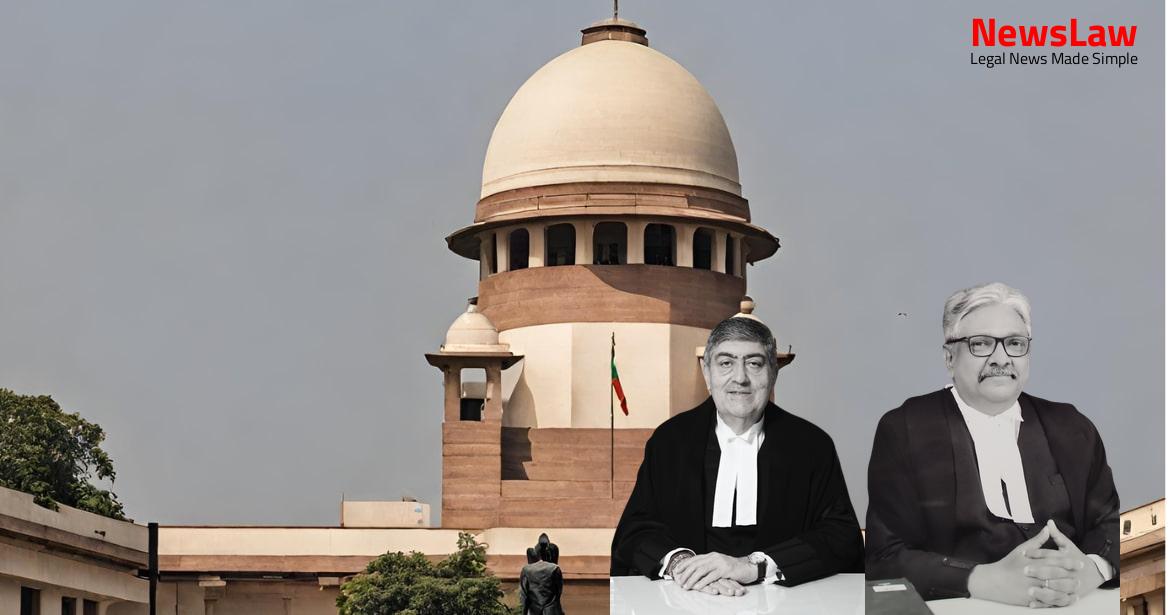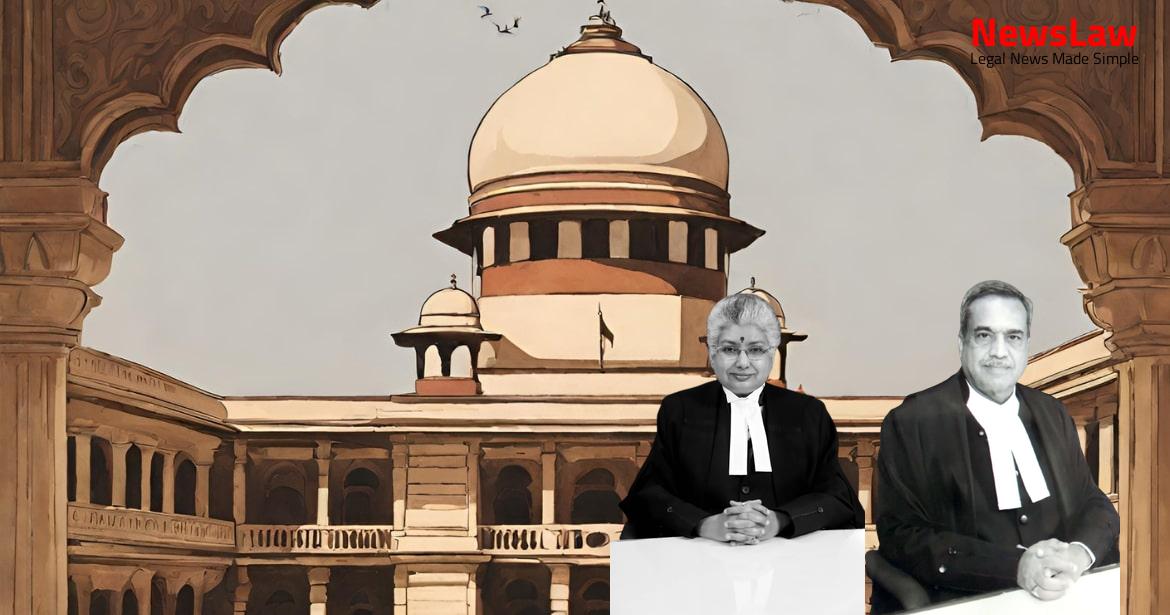Delve into a fascinating legal case where the court meticulously examines the conviction and sentencing under the Arms Act. The judgment provides crucial insights into the interpretation of relevant sections, the necessity of proving intent, and the impact of clean post-incident behavior on mitigation of sentence. This blog post explores the nuanced legal analysis by the court in a complex legal scenario.
Facts
- Appellant Surinder Singh challenged the judgement confirming his conviction and sentence passed by the High Court of Punjab & Haryana.
- Witnesses testified about the incident where the Appellant, in an inebriated state, threatened and fired a shot inside the Complainant’s office.
- Forensic evidence linked the empty cartridge found at the scene to the pistol used by the Appellant.
- The Appellant was examined by Dr. Bidhi Chand after his arrest.
- Maler Singh confirmed the presence of the Appellant in a drunk state at the time of the incident.
- The Appellant refused to provide urine or blood samples during his medical examination.
- The Prosecution heavily relied on eyewitness testimonies, including the Complainant’s, to build its case against the Appellant.
- Police officials acted swiftly upon receiving the information and arrested the Appellant near a Masjid with the pistol in hand.
- Defense witness Mukesh Mittal supported the Appellant’s claim that the shot was fired accidentally.
- The Appellant appealed before the High Court of Punjab & Haryana, discontented with his conviction under Section 307 IPC and Section 27 of the Arms Act.
- The act of firing by the Appellant was deemed to be in violation of Section 27 of the Arms Act.
- The Trial Court sentenced the Appellant to 3 years of rigorous imprisonment based on the conviction.
- Key question was whether the Appellant fired the pistol with intent to kill the Complainant, as established by the presence of the Appellant at the scene and the bullet being fired from his service pistol.
- Minor inconsistencies in prosecution witnesses’ statements were dismissed as natural due to passage of time, with overall support towards the prosecution version.
- Defense witness, DW-1, failed to provide a credible reason for his presence near the Appellant’s house during the event.
- High Court upheld the Trial Court’s conviction and sentenced, rejecting the Defense’s version as ‘a patch of lies and figment of imagination’.
- Appellant was found to have used his service pistol without permission and for an illegal purpose, making his version of events dubious.
Also Read: Analysis of Suppression of Information in Employment Selection: Legal Perspective
Issue
- The two main questions for consideration are whether the High Court erred in maintaining the conviction of the Appellant under Section 307 IPC and whether the conviction of the Appellant under Section 27 of the Arms Act is sustainable.
Also Read: Analysis of Cheating and Forgery in Passport Case
Arguments
- Conviction under Section 27 of the Arms Act not sustainable as the weapon used was licensed.
- Misuse of a licensed weapon is not covered under Section 5 of the Arms Act.
- Both the Complainant and R.K. Sood asserted that the bullet was fired by the Appellant.
- Incident of the gun aimed at the Complainant’s face was averted by the Complainant’s intervention.
- If not stopped, the gun would have unloaded a bullet, leading to potential harm.
- No substantial question of law is involved in this appeal, as per the State Counsel.
Also Read: Discrepancy in Date of Birth: Court’s Legal Analysis
Analysis
- The Court analyzed the conviction of the Appellant under Section 27 of the Arms Act and found it unwarranted and unjust.
- They emphasized the need to prove contravention of either Section 5 or Section 7 of the Arms Act to establish guilt under Section 27.
- The Court discussed the importance of proportionality in sentencing and the factors to consider in determining the gravity of the offense and motive of the offender.
- After a thorough examination of the evidence and circumstances, the Court acquitted the Appellant of the charge under Section 27 of the Arms Act.
- The Court highlighted the distinction between the act of the accused and its result, emphasizing the need to prove intention or knowledge under the relevant section of the Arms Act.
- Section 307 IPC requires intention or knowledge on part of accused to cause death of victim followed by overt actus rea.
- The intent can be inferred from accused’s conduct and surrounding circumstances, including weapon used or nature of injury.
- Injury causing death is not essential to constitute an offence under Section 307 IPC.
- Evidence of motive is crucial but not necessary for a reliable eyewitness account.
- Absence of motive does not render eyewitness testimony untrustworthy.
- Culprit may be liable under Section 307 IPC even if the act does not result in harm to the victim.
- Using any prohibited arms or ammunition resulting in the death of another person is punishable by death
- Using arms or ammunition in contravention of section 5 results in imprisonment for a term of 3 to 7 years and a fine
- Using prohibited arms or ammunition in contravention of section 7 results in imprisonment for a term of 7 years to life and a fine
- The relevant extracts of unamended sections 5 and 27 of the Arms Act outline the licensing requirements and punishments for the illicit use of arms
- Appellant’s offense falls under Section 307 IPC but no one was hurt.
- Appellant has already served a sentence of 3 months and 19 days.
- No history of untoward activities before or after the incident in 1999.
- Appellant’s clean post-incident behavior suggests it was an isolated incident.
- The passage of time and clean record call for mitigation of sentence.
- Positive social contributions should be considered for mitigation of sentence.
- Dismissal from service in 2007 should also be a factor for mitigation.
- Conviction under Section 27 of the Arms Act is set aside, but under Section 307 IPC is maintained.
Decision
- The sentence under Section 307 IPC is reduced to the period already undergone.
- As the Appellant is on bail, his bail bonds are discharged.
Case Title: SURINDER SINGH Vs. THE UNION TERRITORY OF CHANDIGARH (2021 INSC 790)
Case Number: Crl.A. No.-002373-002373 / 2010



